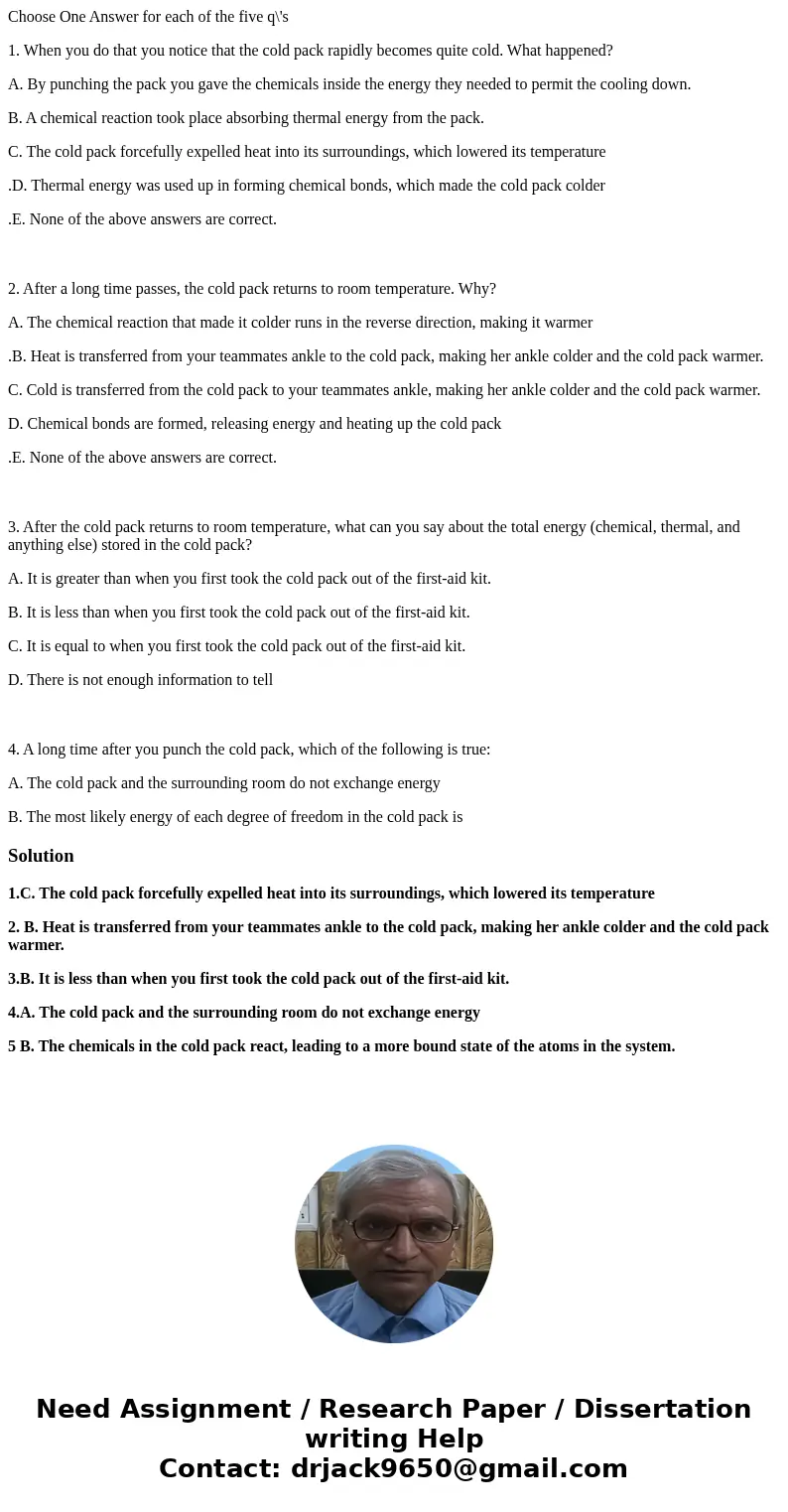Choose One Answer for each of the five qs 1 When you do that
Choose One Answer for each of the five q\'s
1. When you do that you notice that the cold pack rapidly becomes quite cold. What happened?
A. By punching the pack you gave the chemicals inside the energy they needed to permit the cooling down.
B. A chemical reaction took place absorbing thermal energy from the pack.
C. The cold pack forcefully expelled heat into its surroundings, which lowered its temperature
.D. Thermal energy was used up in forming chemical bonds, which made the cold pack colder
.E. None of the above answers are correct.
2. After a long time passes, the cold pack returns to room temperature. Why?
A. The chemical reaction that made it colder runs in the reverse direction, making it warmer
.B. Heat is transferred from your teammates ankle to the cold pack, making her ankle colder and the cold pack warmer.
C. Cold is transferred from the cold pack to your teammates ankle, making her ankle colder and the cold pack warmer.
D. Chemical bonds are formed, releasing energy and heating up the cold pack
.E. None of the above answers are correct.
3. After the cold pack returns to room temperature, what can you say about the total energy (chemical, thermal, and anything else) stored in the cold pack?
A. It is greater than when you first took the cold pack out of the first-aid kit.
B. It is less than when you first took the cold pack out of the first-aid kit.
C. It is equal to when you first took the cold pack out of the first-aid kit.
D. There is not enough information to tell
4. A long time after you punch the cold pack, which of the following is true:
A. The cold pack and the surrounding room do not exchange energy
B. The most likely energy of each degree of freedom in the cold pack is
Solution
1.C. The cold pack forcefully expelled heat into its surroundings, which lowered its temperature
2. B. Heat is transferred from your teammates ankle to the cold pack, making her ankle colder and the cold pack warmer.
3.B. It is less than when you first took the cold pack out of the first-aid kit.
4.A. The cold pack and the surrounding room do not exchange energy
5 B. The chemicals in the cold pack react, leading to a more bound state of the atoms in the system.

 Homework Sourse
Homework Sourse